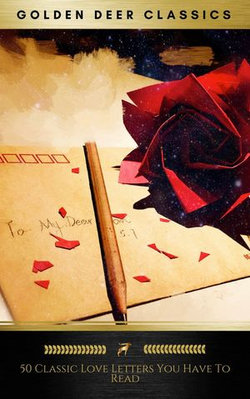If a picture speaks a thousand words, a love letter speaks a thousand more . . . Even in this age of e-mail, faxes, and instant messaging, nothing has ever replaced the power of a love letter. Love letters express the spectrum of our emotions, offering a colorful glimpse into the soul of the writer, and of the writer's beloved. For passionate readers and lovers of words, a letter is irresistible. List of letters included: Ludwig van Bethoveen - The Immortal Beloved Oscar Wilde to Lord Alfred "Bosie" Douglas Emma Darwin to Charles Darwin Vita Sackville-West & Virginia Woolf - Love Letters Honoré de Balzac to Countess Ewelina Haska Napoleon Bonaparte to Joséphine de Beauharnais John Keats to Fanny Brawne Lord Byron to Teresa Guiccioli Voltaire to Olympe Dunover Henry VIII to Anne Boleyn Leo Tolstoy to Valeria Arsenev Gustave Flaubert to Louise Colet Nathaniel Hawthorne to Sophia Hawthorne Jack London to Anna Strunsky Johann von Goethe to Charlotte von Stein James Joyce to Nora Barnacle Abigail Adams to John Adams Sullivan Ballou to Sarah Ballou Harriet Beecher Stowe to Her Husband, Calvin Pietro Bembo to Lucrezie Borgia Charlotte Brontë to Constantin Heger Lewis Carroll to Gertrude Chataway Catherine Of Aragon to Henri VIII Mark Twain to Olivia Langdon John Constable to Maria Oliver Cromwell to Elizabeth Cromwell Ninon De L'Enclos to One Of Her Lovers Alfred de Musset to Amantine Aurore Dudevant Zelda Fitzgerald to F. Scott Fitzgerald Mary Wollstonecraft to William Godwin Heloise - Letter to Peter Abelard Count Gabriel Honore de Mirbeau to Sophie Lyman Hodge to Mary Granger, His Fiancee King Henry IV Of France to Gabrielle d'Estrées Franz Liszt to the Countess d'Agoult Katherine Mansfield to John Middleton Murry Wolfgang Amadeus Mozart to his wife Constanze Thomas Otway to Mrs Barry Ovid to his wife Robert Schumann to Clara Wieck Vincent Van Gogh to Theo, his brother Tsarina Alexandra to Tsar Nicholas II Of Russia Laura Lyttleton - Letter to Alfred, Her Husband




Share This eBook: